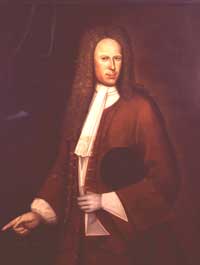Final Project: The Evert Wendell Files

Data Critique
The Evert Wendell account book data details the “fur” trade between Wendell and Canadians/Native Americans. The dates range from the late 1690s to the early 18th century. Trade ranges from Canadians to people in the Catskill region in lower New York. This includes a variety of Native Americans such as the Seneca and Mohawk. It cannot describe the trade other than the details written down in Wendell’s account book. Those features, when translated into the spreadsheet, are as follows: name, male, female, gender, tribe, affiliation, date, trade good, fur, town, and the amount of fur/guilders received. This particular dataset includes about 1600 entries. Many of the names given are offered in relation to another person (i.e. mother of D’caiendanharij). This dataset was taken from Wendell’s account books and translated into a spreadsheet by Dr. Kane. It is divided for clarity, including three rows regarding gender. If this were my only source, I would lack the context of the trade itself that a secondary source could provide. Additionally, I might be lost on the geographic location of the trade, who Evert Wendell was, or what a marten was.
Data Cleaning
For the data cleaning, I will have to combine specific items into more general categories. I will most likely delete the kind of fur trade information in the latter rows and collapse the trade good row into alcohol, fur, weapons, etc. Another task will be tackling the naming situation, as many people listed by their relation to another person. Using better judgment I will remove the question marks, hopefully by looking over the primary source documents and consulting with secondary source material. I will get rid of the male/female columns and keep only the gender column. I will group the tribe information for uniformity and make sure all of the dates are written in the same way. Ultimately, the most important columns will be the trade goods, fur and gender ones.
A Working Secondary Bibliography
Conrad, Maia. “Disorderly Drinking: Reconsidering Seventeenth-Century Iroquois Alcohol Use.” In American Indian Quarterly 23, no. ¾, 1-11 1999.
“To Do Justice to Him and Myself”: Evert Wendell’s Account Book of the Fur Trade with Indians in Albany New York, 1695-1726. Edited by Kees-Jan Waterman. Philadelphia: American Philosophical Society, 2008.I
Waterman, Kees-Jan and Jan Noel. “Not Confined to the Village Clearings: Indian Women in the Fur Trade in Colonial New York, 1695-1732.” In New York History 94, no. 1 40-58, 2013.
Women in Port: Gendering Communities, Economies, and Social Networks in Atlantiv PortCities, 1500-1800. Edited by Douglas Catterall and Jodi Campbell. Boston: Brill, 2012.C
Potential Questions and Arguments
What role did Native American women play in the sale of alcohol? How has this been regarded historically?
Is the term “fur trade” inherently euro-centric? What does the dataset show as being traded?
Outline of Goals
My biggest goal is to visualize what is being traded and in what quantities by which gender. This will include graphs and network building that the reader can interact with. If possible, I would like to ascribe monetary values to the trade goods (and modern equivalents) to help reader’s comprehension.
Ultimately, I would like to make an argument regarding the term “fur trade” and the prevalence of alcohol (specifically rum) as a trade good.
Timeline
3/30: Finish Bibliography and secondary reading
4/1: Complete Data Cleaning
4/7: Solidify argument
4/9: Wireframe
4/14: Plan the visualization and text
4/29: Begin visualization aspect
5/9: Finish Project
5/11: Check project for interaction/user-friendliness
5/15: Submit final project
5/16: Final Project due/ Graduate!
One Comment
Maeve Kane
What are you planning to do with a network? If it’s connections between people, you should see my 2017 piece in the Journal of Early American History.
You should be very, very cautious about ascribing monetary value to the furs and trade items beyond what Wendell himself directly made equivalent, because the price of furs and goods varied wildly by location and over time. Those prices are not agreed on by historians, so you’re better off with internal comparisons. You also will not be able to do modern equivalency for prices because the monetary system and cost of living was so different the comparison is meaningless. As far as audience, aim this at our directed reading group: what difference does this argument about the fur trade make to New York history?
In addition to gender, pay close attention to nation. You’ve got Iroquois and Algonquian groups, in addition to Canadian Iroquois (“Canadian” in the tribe column). What difference does nation and membership in the Six Nations make to alcohol purchasing?